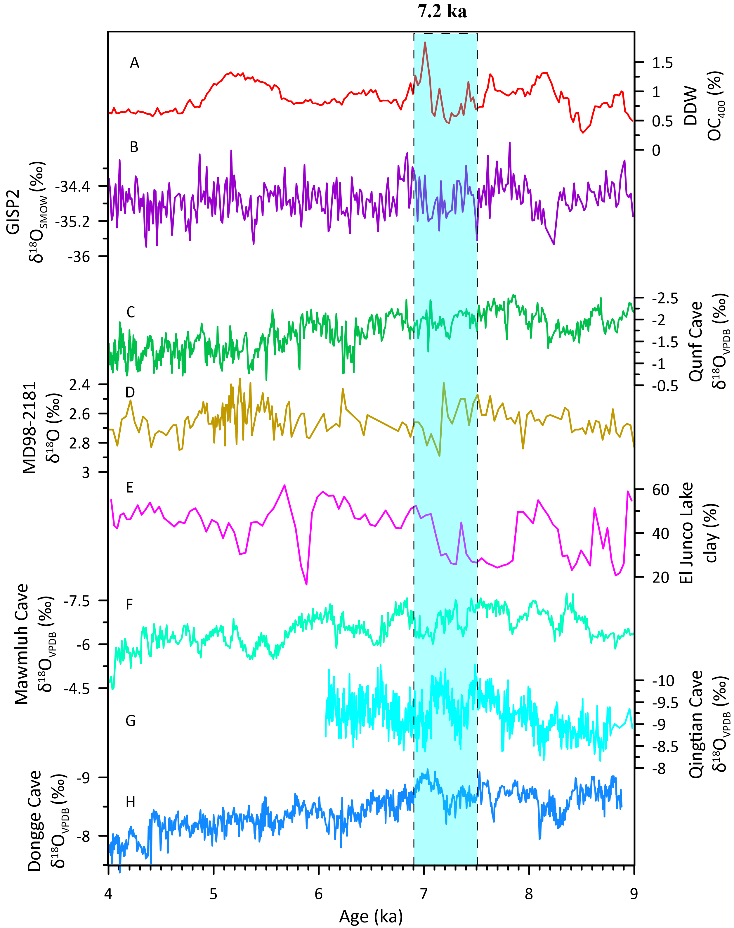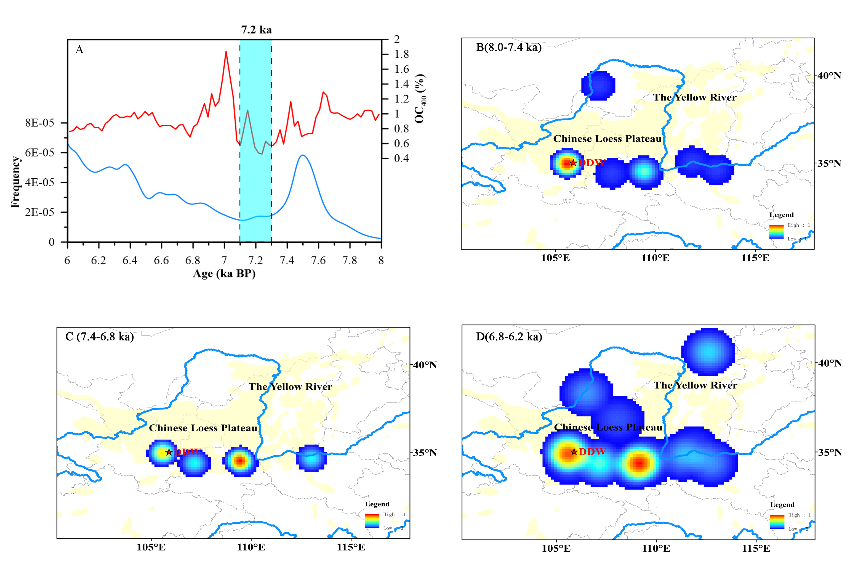The Dadiwan Culture is an important representative of the Neolithic period in the Yellow River Basin of China and is regarded as one of the sources of the Yangshao Culture. This cultural site is a precious treasure of prehistoric civilization.
Archaeological research has revealed that the Dadiwan Culture consisted of five distinct phases. Radiocarbon dating places its time span between approximately 7800 and 4800 years before present, covering around three millennia. Between Phase I (7800–7300 cal yr BP) and Phase II (6500–6000 cal yr BP), there was a cultural hiatus of roughly 500 years, the cause of which remains unclear.
Recently, a research team from the Institute of Earth Environment of the Chinese Academy of Sciences (IEECAS), led by Prof. SUN Youbin and Associate Prof. LIU Xingxing, in collaboration with the Northwest Institute of Eco-Environment and Resources of CAS, Lanzhou University, and Northwest University, investigated the high-sedimentation-rate Dadiwan section on the western Chinese Loess Plateau. Based on AMS 14C dating, and using multiple proxies including organic carbon (OC400) and total nitrogen (TN), they reconstructed the regional climate evolution over the past 14,000 years.
Researchers found a significant decline in organic carbon and total nitrogen at around 7.2 ka, indicating sharply reduced vegetation productivity and a weakened East Asian summer monsoon. Comparisons with high-resolution global records from ice cores, lakes, marine sediment, and speleothem δ18O, they demonstrate that the 7.2 ka cold event was likely a global-scale cooling episode (Fig. 1). This climatic event was associated with North Atlantic freshwater forcing superimposed on reduced solar irradiance.

Fig. 1 Comparison of the Dadiwan record with other paleoclimate proxies. (Image by LIU Xingxing)
Furthermore, compilations of 14C ages from archaeological sites on the western Loess Plateau, analyzed through summed probability distributions (SPDs) and kernel-density estimates (KDEs), show a pronounced reduction in site density during the 7.2 ka interval (Fig. 2). This reduction temporally coincides with the cultural hiatus between Dadiwan Phases I and II. Combined with evidence for a weakened East Asian summer monsoon, the findings suggest that declining environmental carrying capacity, reduced agricultural productivity, and lower foraging efficiency may have contributed to the temporary abandonment of the Dadiwan site (i.e., the cultural hiatus).

Fig. 2 Comparison of organic carbon (OC400) records from Dadiwan with the probability and kernel density distributions of 14C archaeological ages. (Image by LIU Xingxing)
This work, published in Catena, was supported by the CAS Strategic Priority Research Program, the National Natural Science Foundation of China (NSFC), and the CAS Youth Innovation Promotion Association.
 © 2015 Institute of Earth Environment,CAS
© 2015 Institute of Earth Environment,CAS Address:No. 97 Yanxiang Road, Xi'an 710061, Shaanxi, China

 Location :
Location :